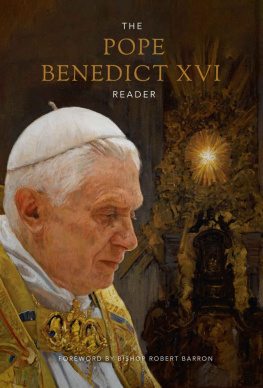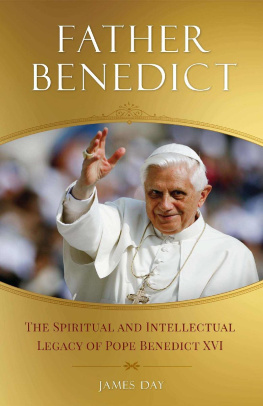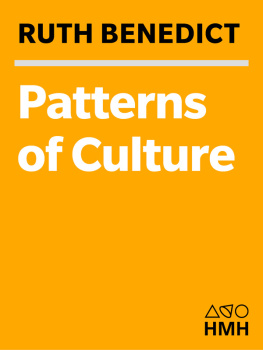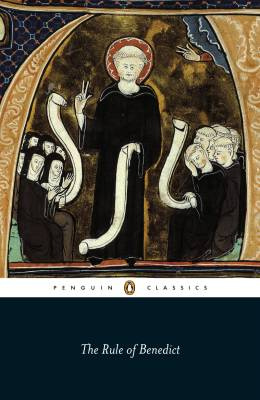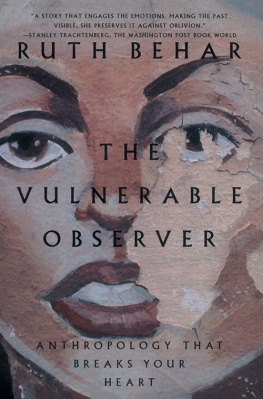An
Anthropologist
at Work
First published 2015 by Transaction Publishers
Published 2017 by Routledge
2 Park Square, Milton Park, Abingdon, Oxon OX14 4RN
711 Third Avenue, New York, NY 10017, USA
Routledge is an imprint of the Taylor & Francis Group, an informa business
Copyright The Riverside Press Cambridge.
All rights reserved. No part of this book may be reprinted or reproduced or utilised in any form or by any electronic, mechanical, or other means, now known or hereafter invented, including photocopying and recording, or in any information storage or retrieval system, without permission in writing from the publishers.
Notice:
Product or corporate names may be trademarks or registered trademarks, and are used only for identification and explanation without intent to infringe.
Library of Congress Catalog Number: 2010052716
Library of Congress Catalogging-in-Publication Data
Benedict, Ruth, 1887-1948.
An anthropologist at work / Ruth Benedict ; edited with an introduc
tion by Margaret Mead.
p. cm.
Originally published : Cambridge : Riverside Press, 1959.
Includes bibliographical references and index.
ISBN 978-1-4128-1850-6
1. Benedict, Ruth, 1887-1948. 2. Women anthropologists--United
States--Biography. 3. Benedict,
Ruth, 1887-1948--Criticism and interpretation. 4. Anthropologists
writings, American--History and
criticism. I. Mead, Margaret, 1901-1978. II. Title.
GN6.B4 2011
306.092--dc22
[B]
2010052716
ISBN 13: 978-1-4128-1850-6 (pbk)

T HE PREPARATION of this book has depended upon the hard work and devoted interest of many individuals, beginning with those who kept the files, many years ago, for Franz Boas, Edward Sapir, and Ruth Benedict. I have been able to draw on published materials on their life and work on Melville J. Herskovits Franz Boas: The Science of Man in the Making, and on Selected Writings of Edward Sapir in Language, Culture, and Personality, edited by David G. Mandelbaum, which includes the bibliography of his poetry prepared by his son, Philip Sapir. I have also to thank the American Philosophical Society for permission to use the Boas files. The final sorting and ordering of Ruth Benedicts papers and their selection and editing for this book have depended upon contributions of time and interest by Ruth Valentine, Sula Benet, Mary E. Chandler, Marie Eichelberger, Geoffrey Gorer, and Rhoda Mtraux. I am indebted to the Boas family for permission to use Franz Boas letters, to Reo Fortune for permission to include his letters about the Dobuan chapter of Patterns of Culture, to the Sapir family for permission to use Edward Sapirs letters, to Erik H. Erikson and to the Viking Fund which, in 1949, published Ruth Fulton Benedict, a Memorial for permission to reproduce the drawing he made of her, and to her sister, Margery Fulton Freeman, for permission to use family pictures and for supplying a wealth of biographical material. Finally, I am indebted to Ruth Benedict herself for the selections she made among her early papers.
For permission to reproduce previously published work by Ruth Benedict and others, I have to thank the American Anthropologist, the American Journal of Orthopsychiatry, The Annals of the American Academy of Political and Social Science, The Atlantic Monthly, the Bernice P. Bishop Museum, Columbia University Press, the Journal of American Folk-Lore, the Journal of General Psychology, William Morrow and Company, The Nation, Charles Scribners Sons, and the University of Toronto Quarterly. Also for permission to reproduce poems by Ruth Benedict (Anne Singleton), Edward Sapir, and myself, I have to thank The Canadian Forum, The Measure, The Nation, The New Republic, New York Herald Tribune Books, Palms, Poetry, and Voices. I am indebted to the Boston Museum of Fine Arts for permission to reproduce El Grecos portrait of Fray Felix Hortensio Paravicino.
After the formation of the Institute for Intercultural Studies, Ruth Benedict used it as an instrument for the expenditure of the residue of the Quain Fund, which had been left to her to use for the benefit of anthropology. Since her death, the Institute has received substantial contributions from her executors which have been used in Benedict Grants made to individuals with whose special circumstances and needs, as well as with whose scholarship, we have felt she would have been in sympathy. The ordering of her papers for their deposit in the Vassar College Library and the preparation of this book have been done through the Institute for Intercultural Studies, and any royalties the book may earn will be used for Benedict Grants in the future.
Margaret Mead
New York
March 15, 1958
Contents
Illustrations
Eucharist by Ruth Benedict
frontispiece
following page 280
Ruth Fulton, two years of age.
The Shattuck farm at Norwich, New York, about 1900.
Dr. Frederick S. Fulton, 1857-1889, Ruth Benedicts father.
Bertrice Fulton, 1860-1953, and her two daughters, Ruth and Margery.
Portrait of Fray Felix Hortensio Paravicino by El Greco.
Ruth Fulton in 1913.
Stanley R. Benedict, 1884-1936.
Ruth Benedict, about 1924.
Stanley Benedict in the later years of their marriage.
Franz Boas, teacher, 1858-1942.
Edward Sapir, colleague and critic, 1884-1938.
After her path was clear.
If I can just live till Im fifty, Ill be peaceful.
Prefiguring death.
Sketch by Erik H. Erikson, early summer 1948.
W HAT HAPPENS on the growing edges of life is seldom written down at the time. It is lived from day to day in talk, in scraps of comment on the margin of someone elses manuscript, in words spoken on a street corner, or in cadences which lie well below the words that are spoken. Later it lives on, reshaped and reinterpreted, in the memories of those who were part of it and finally slips, like a childs leaf boats after a long journey down a stream, into the unrecognizing hands of ones spiritual descendants who do not know the source of the water-soaked treasures which have landed on the shores of their lives. In any generation there may be a group of people who find meaning in just these unrecorded parts of life, who can read a book the better for knowing what the author meant to write while writing something else, or who even catch a glimpse of excitement from a first edition if they know also how the writer felt on the day those crisp fresh pages first met his eye. Particularly today there is great interest throughout the world in becoming rather than in completed form, in the latent image and in the counterpoint between almost forgotten words and new, unimagined meanings. And so it seems a possible enterprise to try to set down such a piece of oral history as lies back of the work of Ruth Benedict, who came, unexpectedly, into a young science and shaped her thought into a book which for a generation has stood as a bridge between those who cherish the uniqueness of individual achievement and those who labor to order the regularities in all human achievement.






